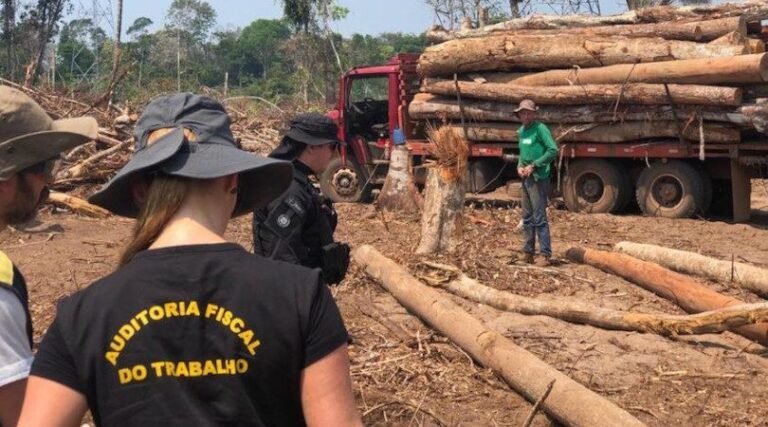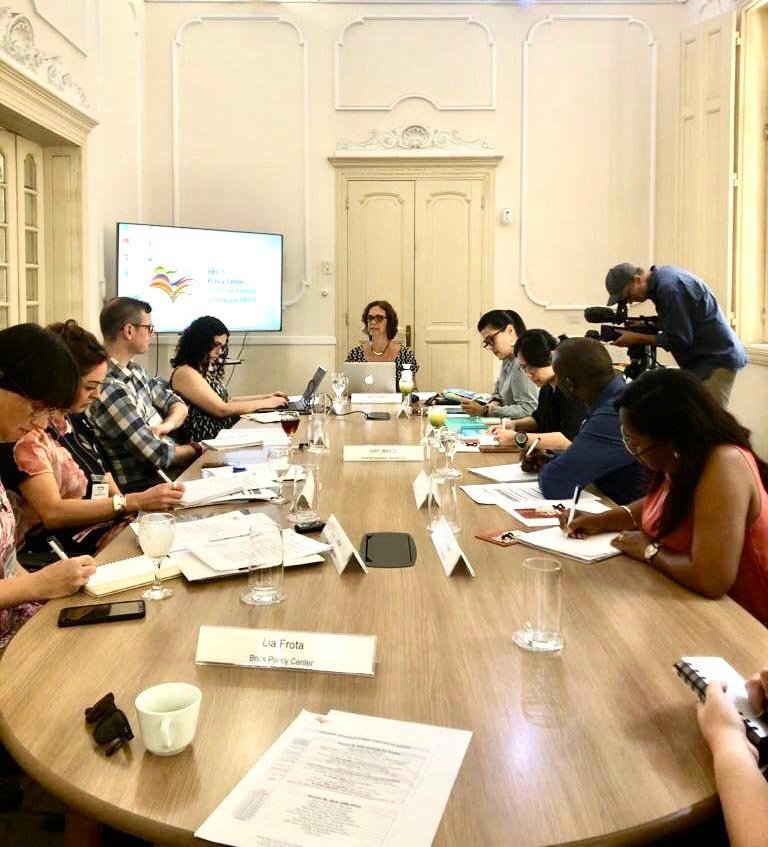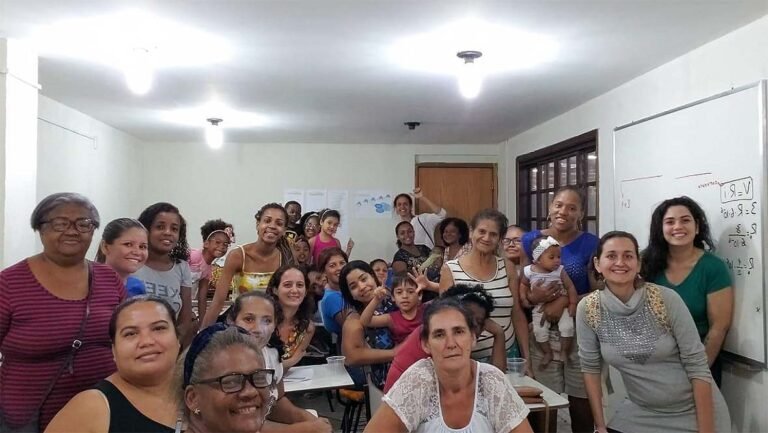The connection between human rights, trafficking in persons and modern slavery
The eradication of slave labour in Brazil is associated with the preservation of human dignity and therefore it is on the list of human rights to be protected. It’s a consensus among human rights authors in Brazil that the transformation of human beings into commodities, albeit by free will (Sarmento, 2018; Vieira, 2017), disrespects dignity and the social value of labour. Therefore protection of human dignity is an obligation of states, ratified by the UN members in the human rights conventions[1]. The core labour standards: freedom of association; right to organize and bargain collectively, prohibitions of forced labour and discrimination in employment[2], distinctly protect the dignity of human beings as a human right.
In 2014, the ILO launched Protocol 29 toward the modernization of the forced labour conventions which are still to be ratified in Brazil. Noting that most of the victims of forced labour today are in the private sector, this protocol reinforced the obligation of states to act against trafficking in persons; sanction the perpetrators of the crimes and provide compensation to the victims.
On another note, in 2004 Brazil ratified the UN’s Palermo Protocol[3], which was approved by the UN in 2000, by Decree no 5.017 effective from March 12, 2014. Between 2008 and 2013, the Brazilian Federal Government attempted to implement national plans to tackle human trafficking, but without any enforcement aspect.
Only after several discussions with the society (companies, government, academy, and NGO) did the Brazilian National Congress enact the Law no 13.344 (2016), which added the crime of trafficking in persons to the Brazil’s Penal Code and finally defined clear and objective penalties. The law also contributed to internally articulating public policies, by launching the National Committee to Tackle Trafficking in Persons (CONATRAP) along with anti-trafficking centres in the country[4].
There is a significant relationship between trafficking in persons and modern slavery in Brazil, that’s why is so relevant to produce an advanced anti-trafficking in person framework in the country. Victims of modern slavery in Brazil are also victims of internal trafficking in persons (also regulated by the law no 13.344). Brazil is, according to UNODC (2019), an origin, transit, and destination country.
Thus, even if Palermo Protocol has a loose definition of trafficking in persons it is the highest international mechanism to tackle the crime and the main advocacy mechanism to strengthen national public policies. It boosts the urgency to protect and assist the victims of trafficking, with full respect for their human rights. Hence, the UN and ILO protocols converge, recognizing that the human rights of trafficked persons shall be at the centre of all efforts to prevent and tackle trafficking in persons and to protect, assist and provide redress to victims of trafficking and forced labour.
Modern Slavery: definitions and laws in Brazil
Article 149 of the Brazilian Penal Code, as amended in 2003[5], criminalizes the reduction of “a person to a condition analogous to that of a slave” either by “subjecting him/her to forced labour or debilitating workdays; by subjecting him/her to degrading working conditions; or by restricting, by any means, his or her movement by reason of debt”.
Many countries adopted the term “forced labour” rather than “slavery” or “modern slavery”, in their legal frameworks and the majority do not consider slavery a crime. The ILO defined forced Labour in 1930, like: “(…) all work or service which is exacted from any person under the menace of any penalty and for which the said person has not offered himself voluntarily.” On the other hand, the League of Nations Slavery Act from 1926, defined slavery as: the status or condition of a person over whom any or all of the powers attaching to the right of ownership are exercised.”
Later, the UN Supplementary Convention on the Abolition of Slavery and Slave Trade from 1956, added to the League of Nations’ definition of slavery the practices of debt bondage, serfdom, forced marriage, sexual exploitation and child labour. In fact, in comparison to the existing international definitions of modern slavery, the Brazilian concept is wider and emphasizes working conditions rather than the type of relationship between employer and worker, such as the existence of possession, ownership or control of the victim. A definition of modern slavery is relevant to guide labour inspections on the identification of the crime or violation. Also, defining is important to gather reliable data, forms of compensation, remedies, and sanctions.
Suitable actions to tackle trafficking in persons and modern slavery internationally demand harmonization of laws and much research on the social factors that heighten vulnerability directly affecting the efficiency and sustainability of place-based responses to slavery.
Flexibilization of the law and resilience:
There is a flexibilization of the Brazilian labour laws course affecting the social protection of workers. According to lecturers that held the discussions about the subject during the workshops (including, public servants, NGOs and universities), the public policies on eradication of modern slavery are suffering from a lack of efficacy due to the absence of resources. This is reflected in the reduction in the city’s number of inspections in the last three years.
Despite the setbacks, the city of Rio de Janeiro is resilient because states, local councils, and universities are doing efforts to fill the gap left by the federal instances in the combat against slavery. The secretaries of social development, human rights and social work at the state and local levels have been carrying on education and informational initiatives with the support of NGOs. Research centres at public universities in Rio de Janeiro, such as the GPTEC – Technical Research Group on Modern Slavery linked to the Rio de Janeiro Federal University and the Research Centre on Modern Slavery at the BRICS policy centre – PUC RJ, are currently carrying on research on vulnerabilities to modern slavery in urban areas.
The invisibility of victims in the periphery
Internal migrants are still most of the workers vulnerable to modern slavery practices in Rio de Janeiro. Nevertheless, recent data highlights an increase in the number of immigrants from Venezuela, China, Congo and Senegal, victims of slavery in the urban areas of the city. The research findings of GPTEC on cases of modern slavery in Rio de Janeiro city point to different sectors of the economy. For example, Congolese and Senegalese were found in slaughterhouses, Chinese in pastry shops, and Venezuelans in small farms in the suburbs of the city. The findings also point out the underestimation of the official registers of slavery incidence in the city.
The city is characterized by a “belt” of favelas covering many spaces in urban areas. Studies confirm that around 22% of the inhabitants of Rio are residents of favelas, which are territories where the state does not have control. Informality, degrading conditions of work, sex exploitation and child labour are invisible to the society and state, in these areas.
Challenges
The concept of modern slavery is under attack in Brazil. There is a lawsuit brought in 2017 to the Supreme Court questioning “degrading conditions” as modern slavery, highlighting the freewill argument, which is accepted in the criminal court’s decisions. Although slavery is a crime written in the penal code, problems with definitions and proof of causal relationship between the offender and the defendant are obstacles to accessing the criminal courts.
Labour courts and labour prosecutors are relevant actors in the field. Recent changes in the labour law, such as the legalization of outsourcing of services that are part of the core business of the enterprise, have weakened the accountability of employers for modern slavery and human rights violations, but new strategies are being constructed in the judiciary to safeguard the rights of victims in the country.
On the other hand, there is a need to explore the new patterns of exploitation at work affecting human dignity and how the state and civil society face the problem. Regarding Rio de Janeiro, there are several governmental institutions that act upon the agenda to punish and fight this practice (on all levels) but there is a lack of studies and initiatives on prevention and to remedy for victims. We suggest a comparative analysis of the similarities and differences in the practices in the world, means to enforce laws and models/types of civil society participation in the construction of policies and their operation.
In Rio’s context the difficulty to monitor and identify the victims of slavery, especially in favelas is linked to lack of understanding of concept and laws aggravating vulnerability. The aspect of vulnerability in the context of Rio de Janeiro is a sensitive subject because 22% of the city’s population are living in subnormal arrangements, or slums[6]. Of them, 30% earn half the minimum salary. This means that almost a quarter of the entire population of the city (6.7 million) don’t benefit from the public policies depending on unworthy and precarious jobs, subjected to slave-like conditions.
Raising awareness on the issue of modern slavery in the peripheries means providing citizenship, access to justice, empowerment of minorities and income generation. There are several place-based civil society initiatives in some of these areas aiming to support leaders who are vectors of rights for their own community. Social entrepreneurship and formal and informal community organisations are increasing and encouraged. We suggest a better understanding of the local initiatives for raising awareness, monitoring, and identification of the practice with a focus on the peripheral territories where risks of slavery are higher.
References:
Brazil. Decree no 5017. Available in: http://www.planalto.gov.br/ccivil_03/_ato2004-2006/2004/decreto/d5017.htm
Brazil. Law no 13.344. 2016. Available in: http://www.planalto.gov.br/ccivil_03/_ato2015-2018/2016/lei/L13344.htm. Available on: 12/03/2018.
HOFFMAN, H. ‘Lei de Tráfico de Pessoas (Lei 13.344/16)’. 2016. Available in: https://henriquehmc.jusbrasil.com.br/artigos/399990751/lei-de-trafico-de-pessoas-lei-13344-16.
ILO. Protocol of 2014 to the Forced Labour Convention. Available in: https://www.ilo.org/dyn/normlex/en/f?p=NORMLEXPUB:12100:0::NO::P12100_ILO_CODE:P029
PORTAL GEO. Favelas na cidade do Rio de Janeiro: o quadro populacional com base no Censo 2010. Available in: http://portalgeo.rio.rj.gov.br/estudoscariocas/download%5C3190_FavelasnacidadedoRiodeJaneiro_Censo_2010.PDF
SARMENTO, Daniel. Dignidade da Pessoa Humana. 2016. Conteúdo Trajetórias e Metodologia. 2 ed. Rio de Janeiro: Editora Fórum.
UNODC. ‘Global Report on Trafficking in Persons 2018’. Austria, Vienna : 2018. Available in: http://www.unodc.org/documents/data-and-analysis/glotip/2018/GLOTiP_2018_BOOK_web_small.pdf.
VIEIRA, Oscar Vilhena. Direitos Fundamentais: Uma leitura da Jurisprudência do STF. 2017. 2 ed. São Paulo: Editor Malheiros.
[1] The UN Charter (1945), The Universal Declaration on Human Rights (1948), The International Convention on the Elimination of All Forms of Racial Discrimination (ICERD) (1965), The International Convention on Civil and Political Rights (1966), The International Convention on Economic, Social and Cultural Rights (1966), among other UN Conventions stress the importance of the protection of human dignity, as a principle.
[2] ILO Convention 87; ILO Convention 98; ILO Conventions 29 and 105; ILO Conventions 100 and 111.
[3] Additional Protocol to the UN Convention against Transnational Organised Crime to Prevent, Suppress and Punish Trafficking in Persons or Palermo Protocol.
[4] Those Anti-TIP Centers are majorly concentrated in wealthier states and have specific teams, composed by police officers, prosecutors, and care network professionals. The problem is that the majority of the country is still lacking this anti–tip – scenario that will most likely change, because the Justice Ministry is funding several projects, such as courses and training for professionals in the entire country.
[5] See Law No. 10.803, of 11th December 2003, D.O.U. de 12.12.2003, 1 (Braz.): “Art. 149. Reduzir alguém a condição análoga à de escravo, quer submetendo-o a trabalhos forçados ou a jornada exaustiva, quer sujeitando-o a condições degradantes de trabalho, quer restringindo, por qualquer meio, sua locomoção em razão de dívida contraída com o empregador ou preposto (…)”. Prior to its alteration, Article 149 of the Penal Code simply held that it was a crime to reduce a person to a condition analogous to that of a slave. The 2003 reform added a more detailed account of which actions should be deemed to fit the description of the crime, particularly by clarifying that the subjection of the worker to degrading labour conditions or to debilitating workdays – albeit free will, suffices for the commission of the crime.
[6] PORTAL GEO. Favelas na cidade do Rio de Janeiro: o quadro populacional com base no Censo 2010. Available in: http://portalgeo.rio.rj.gov.br/estudoscariocas/download%5C3190_FavelasnacidadedoRiodeJaneiro_Censo_2010.PDF





